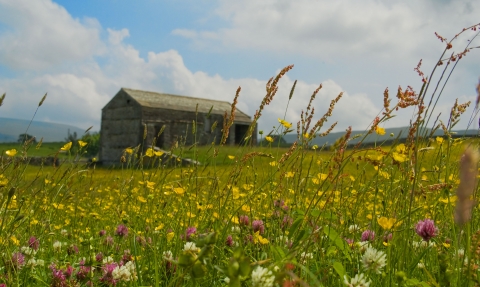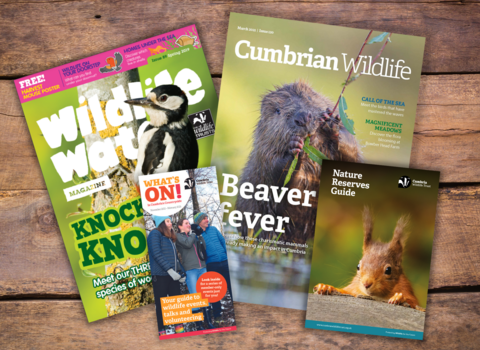
Grasslands and hay meadows
What are grasslands and hay meadows?
Fields of gently waving grasses splashed with purple, yellow and white flowers evoke sleepy summer images all over Britain. Flower-rich meadows were once common throughout Cumbria.
They change dramatically through the season in their appearance and evoke a romantic notion of farming in harmony with the environment. Sadly, many of these images only exist as memories, as hay meadows have suffered a catastrophic decline.
Nationally, 97% of flower-rich hay meadows have been lost between the 1930s and the mid 1980s. This was in part due to agricultural intensification converting 'herb meadows' to more productive grasslands, dominated by lush grasses.
Nationally, 97% of flower-rich hay meadows have been lost between the 1930s and the mid 1980s.
Why do grasslands and hay meadows matter?
Hay meadows are important for the plants they support. A hay meadow can support an incredible 50 plant species/sq. metre! This diversity of plants, with many species coexisting in a small area, has developed over a long period of time and is partly the result of the different rates of growth and development of each species in the meadow. These species are largely stress tolerant rather than fast growing competitive species.
Such a wealth of plant species can in turn provide habitats for many different animal species including the brown hare, insects such as the great yellow bumble bee, and birds such as skylark, curlew, lapwing and twite.
In the Lake District, many meadows were ploughed up during the Second World War so that potatoes could be grown. More recently this has also been done to produce silage as winter animal feed.
Recent surveys suggest that there may be fewer than 10,000 hectares of unimproved meadows left in Britain, and only 1,000 hectares of upland hay meadow habitat.
However, there are still pockets of the country where hay meadows are more common because the type of land and the regional climate dictate the use of older farming practices.
In the north of England, traditional meadows are still found in the north Pennines, North Yorkshire and Cumbria. Here some of the higher altitude meadows support specialist plants species, such as wood crane's-bill and many of the lady's mantle species. There are also lowland meadows, characterised by their assemblages of more common plant species.
In addition, roadside verges near fields that have been converted to lush grasslands often act as a reservoir of meadow flower species. It also helps that many land managers are proud of their meadows and very knowledgeable about the species they support and the management required in maintaining them.
Interested in volunteering with our grasslands team? Email us
Our partners
We're working with the following partners to enhance, restore and manage flower rich hay meadows, using traditional practices to increase plant diversity:
- Friends of the Lake District – Westmorland Dales Landscape Partnership Scheme (Heritage Lottery Fund) Conserving Species-rich Grassland project
- Lake District National Park Authority – Rusland Horizons Magical Meadows
- The National Trust (restoring species-rich grassland at National Trust properties)
- John Strutt Conservation Foundation (restoring species-rich grassland on land owned by the John Strutt Conservation Foundation)
We promote the landscape of hay meadows through events, educational workshops, walks and talks.
We spread the message about how and why we need to preserve our hay meadows.
We provide opportunities for people to grow to love and value this habitat, its beauty and its place in our landscape.
Upcoming events
If there are any upcoming events we'll show them to you below.
Free downloads:
Hay meadow heritage and wild flower ID leaflet PDF
Wildflowers of Westmorland ID leaflet
How wildlife and hay meadows are connected factsheet PDF
Hay meadow walks guide PDF
How to manage and restore hay meadows PDF
Results from five years of hay meadow restoration in Cumbria 2006 to 2011 PDF
A guide to Managing Grasslands for smallholders PDF

Make that difference for the wildlife you love
- Free entry to our nature reserves.
- Free nature reserve guide.
- Cumbrian Wildlife magazine three times a year with accompanying 'What's On' guide.
- Plus more! From just £3.75 a month/£45 a year (based on Individual membership)




